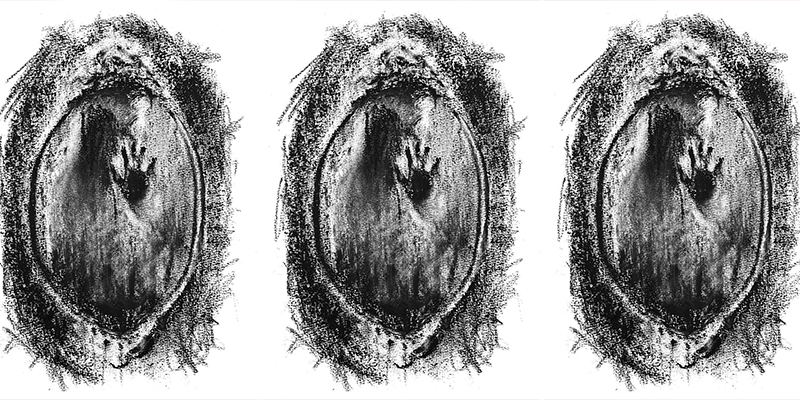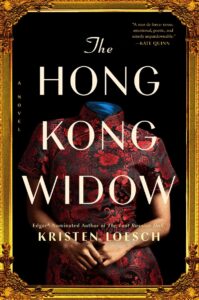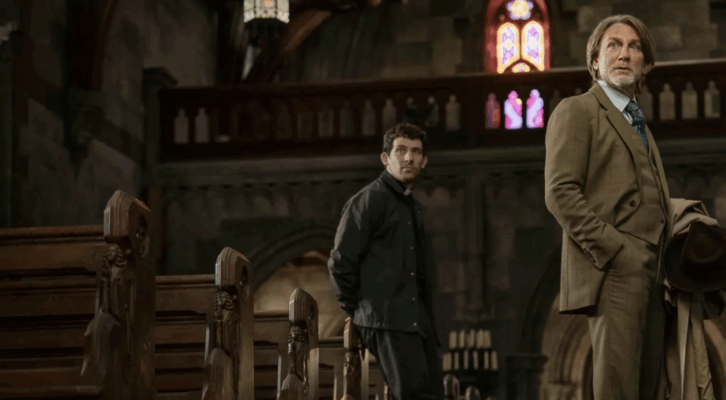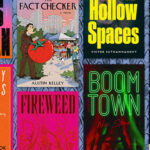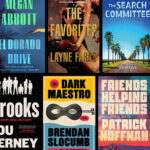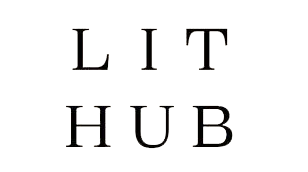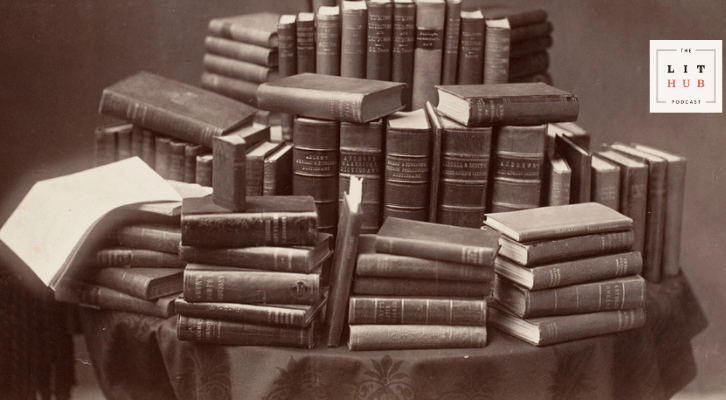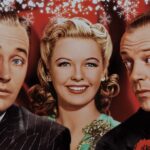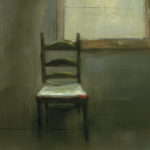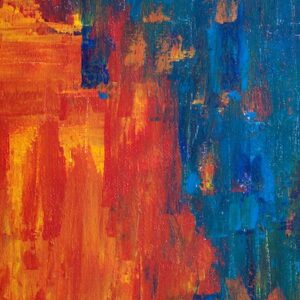The main character in my second novel, The Hong Kong Widow, is an artist. She is also a spirit medium. During séances, she becomes possessed by ghosts, goes into a trance, and begins to draw. That’s how the dead speak to her. While writing those scenes, I started to feel curious about what her sketches might actually look like.
That’s the short answer to the question: Why does your book contain illustrations?
Here’s the long answer.
If you’re anything like me, you were, as a child, thoroughly terrified and completely enthralled by the artwork by Stephen Gammell in Alvin Schwartz’s Scary Stories to Tell in the Dark. A copy of this modestly slim collection of tales sits on the bookshelf in my living room to this day, and my kids consider it to be cursed—or at least that’s how they behave if the contents of the shelf ever shifts and the copy happens to fall out. Don’t look at the cover! My eldest will shriek at my youngest, who is six years his junior. Don’t open it either! Ironically, my kids know the contents of Scary Stories nearly by heart. It’s not actually the stories that scare them, anymore. It’s the art. It’s always been, at least a little, the art.
Horror graphic novels have been around for decades, and many of them are excellent: Junji Ito’s Uzumaki comes instantly to mind. For a long time, however, I didn’t think that a ‘normal’, text-based horror novel could contain significant visual elements. (House of Leaves by Mark Z. Danielewski is many things, but not normal.) But that was before I encountered Jason Rekulak’s 2022 hit, Hidden Pictures, whose manyfold illustrations are definitely intended to rattle the reader. Many of them are drawn by a child character, and the artistic style is simple, juvenile; I think that’s part of what makes them so terrifying. You’ve seen scenes in movies where young kids are drawing innocuously and then the camera zooms in on what they’ve just drawn and…it’s not butterflies and unicorns after all, is it?
Maybe subconsciously, after reading that book, I began thinking: Well, why not?
There was a time in the history of publishing when illustrations in novels (especially serialized novels) were not uncommon. Back in the 19th century, Henry James’s The Turn of the Screw got the full treatment, as did Charles Dickens’s The Christmas Carol. But fast forward a hundred years, and novels contained nothing but text; accompanying artwork was increasingly associated with comic books and other ‘low brow’ forms of storytelling. Nowadays, the only illustration most books ever get is the cover, but people still love pictures—and in some areas, the industry seems to be responding. Character art, typically commissioned by the author, abounds on social media. Big releases in a few select genres, such as romantasy, are coming out with special editions containing stunning illustrated endpapers and/or interior art.
But in my own work, I was wary of making the story dependent on its illustrations; of writing a book that required a reader to be holding the text in their hands. I recently tore through the incredibly compelling Strange Pictures by Uketsu, a quasi-detective-style, quasi-horror book that contains illustrations galore, and wondered if listening to it on audiobook would have constituted a vastly different reading experience.
The Hong Kong Widow is a historical gothic thriller set in 1950s Hong Kong, about a young woman, Mei, who enters a séance competition at a haunted house. The images that Mei produces during séances are crucial to the plot, as are the mysterious paintings left to her by her mother, who has been missing since she was a child. Once I’d thought of including illustrations, I reached out to the Hong Kong-based artist Jiksun Cheung (a phenomenally talented horror storyteller in his own right; see his award-nominated story Cupola, in SmokeLong Quarterly, for your chill of the day), not knowing what to expect, and fully prepared for my publisher to shoot down the idea. They didn’t—In fact, my editor was enthusiastic from the outset, which helped me calm my own anxiety about it!
Given the green light, I worked with Jiksun over the course of several months to come up with what would eventually become the illustrations featured in the novel. For every image that appears, of course, there are several drafts and versions that didn’t make the cut. In the final hardback, for example, there is one illustration of a child’s face, half hidden by hair. It is an emotional, perhaps jarring picture, but it isn’t meant to be frightening. The first version of this child’s face, on the other hand? When Jiksun first sent it to me over WhatsApp, I literally let out a little scream. I didn’t choose to include it—The Hong Kong Widow is gothic horror, heavy on atmosphere, light on gory details—but I love it nonetheless. (If you’d be curious to see it, please feel free to contact me via the form on my website; I’d be happy to share it!)
The Hong Kong Widow now contains 10 original illustrations in pencil and charcoal. It isn’t necessary to have them on hand to understand the story, but it certainly changes the reading experience. In those few seconds, the reader is looking down at exactly what Mei herself sees, at the end of every séance, as well as when she discovers the paintings by her mother. I feel like there is a momentary, perhaps slightly uncomfortable, mind-melding between the reader and my main character. It is almost like the reader is being possessed by Mei. And maybe that, in the end, is what I really wanted all along!
***

